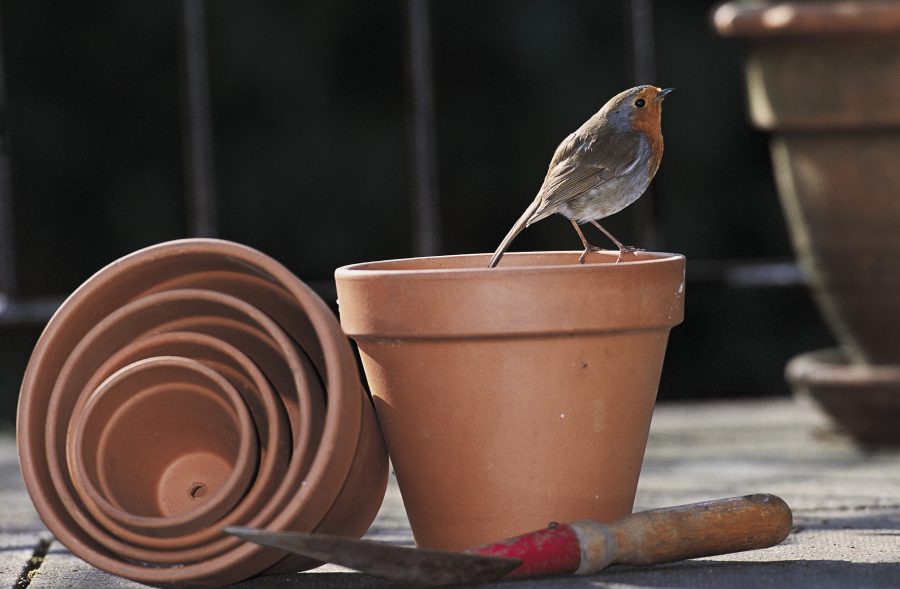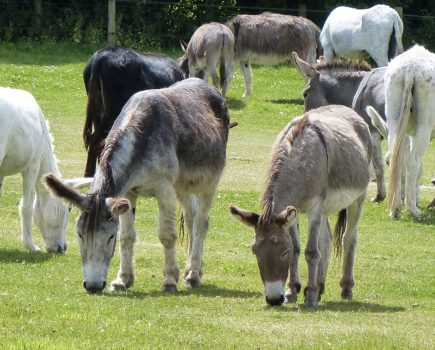Why are robins so closely associated with Christmas?
The RSPB says:
Everyone recognises a robin, with its handsome red/orange breast. They’re people-friendly – especially fond of gardeners – and they bring a welcome dash of colour in the depths of winter.
They also provide us with birdsong all year round – in fact, the robin is a bird you’ll see in your garden or on your plot from January until December. So why does it get so much attention at Christmas?
They’ve been recognised by us for centuries, with mentions of robins dating back to Anglo-Saxon times. Historically, they’re woodland birds, who would follow around large mammals like wild boar, waiting for their hooves and snouts to unearth worms and insects for them to eat. The truth is, they treat us in much the same way and stay close to us when we’re working outside because Robins realise we do much the same as the boars and can save them some effort. You’ve no doubt spotted a robin or two whilst working on your plot for this very reason!
Robins have had a place in festive folklore well before our ‘traditional’ Christmas celebration. The fact they are one of the few birds still singing in winter and easy to spot has probably driven that. It could well be that determined nature, to keep going when others are hunkered down or conserving energy in the coldest of weathers, which led them to become a symbol of hope and luck for midwinter festivals.
Their reputation endured through the centuries. When Victorians introduced Christmas cards, Robins were a popular design, probably because of the colour they bring to the season. The colour red also closely linked them to the uniforms of the posties who delivered the festive mail.
To this day, they’ve remained a constant on our cards – you will find them in abundance in this year’s range in our RSPB shops, along with a host of robin-related decorations and other gifts.
What this peaceful, hopeful Christmas card image of robins doesn’t quite capture, is just how feisty they can be, and what they’re capable of if their home turf is threatened at all! Though they seem friendly to us, they are fiercely territorial and are capable of fighting to the death in spring to defend their patch as breeding starts. It rarely ends in fatalities, as defeated Robins will usually retreat before this happens. But battles can be brutal. Robins sing all year round because they are so territorial, and once they have found a great spot, close to food and the nesting habitat they like, they will work really hard to keep it. So if you see two Robins in close proximity without either showing aggression, it’s likely to be a male and female pair.
Image caption: Robins are often called the ‘gardener’s friend’ as they stay close to anyone working on the land, in the hope of finding a meal. Picture credit: Chris Gomersall, RSPB Images
This Q&A article extract was taken from the December 2024 edition of The Country Smallholder. To read the article in full, you can buy the issue here.








